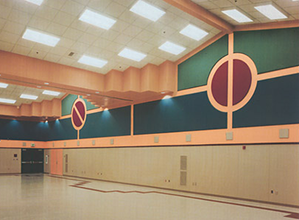Sound Reduction
Sound or noise reduction is a process of applying engineered solutions to noisy equipment or processes with the main goal of mitigating the sound levels. Noise reduction involves using a sound level meter to take sound readings of the equipment or process to uncover the current sound levels. Next, establish a sound reduction goal of what sound level you require the area to be. OSHA dictates that 85 dBA or above requires mandatory hearing protection and at 90 dBA engineering controls are required to reduce sound levels in the area. The most basic way to reduce worker exposure to noise is to move the noisy equipment or process to a more remote area away from the noise receivers.
If this is not practical, a solution using noise control products and soundproofing materials should be considered for sound reduction. Good design for the solution is where accessibility to the equipment is optimum and worker and maintenance access is addressed. Adequate air flow to the equipment should be considered when there is a motor present. Sound walls should be placed as close to the equipment as possible and as high as practical for the greatest sound reduction. Sound enclosures should allow enough space for workers to access the machine and include doors or removable panels for access to the machine. If the equipment was supplied with a steel enclosure that is not acoustic, simply line the equipment enclosure with a composite foam product for an easy fix and noise reduction. Other solutions include sound blankets, sound curtains or STC rated doors. In progressive facilities, noise reduction is practiced and addressed on an ongoing basis.
For help with your noise reduction project, check out our acoustical consultant services or give eNoise Control a call.





